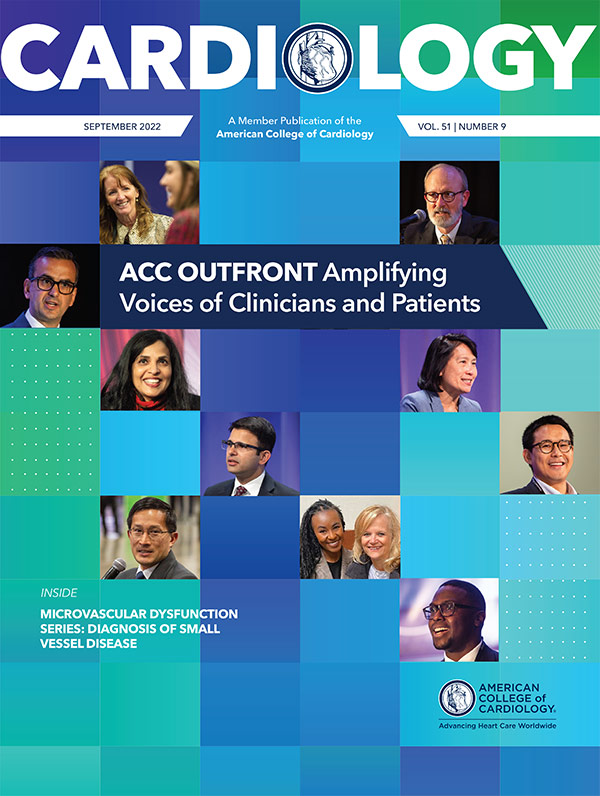Perspective | Is it Time to Take Another Look at the Quality Improvement Movement?

The Quality Improvement (QI) movement has had profound effects on the professional lives of cardiologists beginning in the 1980s. These effects, however, have not always been positive. Often our cardiology colleagues voice frustration and concerns about the processes involved in QI, while simultaneously agreeing with the QI principles overall. However, the dissenting voices from clinicians regarding QI processes have not always been coherent or well-articulated. In a recent three-part series of articles published in the New England Journal of Medicine, Lisa Rosenbaum, MD, (a cardiologist herself) presents a much-needed, thoughtful and well-reasoned counterpoint, challenging many of the current QI practices.1-3 This series is a must read for all interested in QI.
Rosenbaum reminds us that the foundational principle of QI revolves around fixing faulty systems rather than faulty people. However, the processes designed to improve the health systems have been very costly at all levels: Centers for Medicare and Medicaid Services (CMS) and small and large practices. Significant time spent by physicians in satisfying QI-related documentation has particularly affected small practices. Not all metrics used to measure quality have been reliable or valid. Moreover, reliance on claims data for quality measurement introduces additional issues about reliability. Most QI metrics do not allow accounting for decisions sensitive to patient preference and/or physician judgment.
Linking financial incentives to quality, Rosenbaum points out, has yielded mixed results at best regarding patient specific outcomes. In some instances, such as the Hospital Readmission Reduction Program, there might have been a signal towards increased mortality. Linking quality to reimbursement comes with the risk of a higher documentation burden. An infrastructure incapable of handling the documentation needs could result in incomplete documentation of QI measures and lost revenues. This, Rosenbaum argues, disproportionally penalizes the safety-net hospitals and in turn our most vulnerable patient population.
Another important question related to QI is who should ultimately be able to access, review and use QI information. Physicians as a group are interested in feedback about their performance, particularly in relation to their peers and there is much evidence indicating such feedback alone does positively impact physician performance. The model used by the Veterans Administration (VA) Health System where routine proactive review of cardiac catheterization procedures by interventional cardiologists is viewed favorably and works well for QI. However, we need to acknowledge that the government-run VA system is unique and different from rest of our health systems.
Rosenbaum refers to the recent pandemic to advance another interesting viewpoint. During the early days of the COVID-19 pandemic all reporting requirements were suspended to allow physicians to adequately take care of patients. This might be indicative indirectly that our QI oversight system is finally acknowledging the distractions caused by current requirements are adverse for patient care. The selfless dedication shown by health care workers worldwide during the pandemic is clear evidence of the high level of professionalism in our field. Most physicians have sufficient engagement and passion for the inherently gratifying profession of medicine. Lack of acknowledgment of this may be very counterproductive to the goal of meaningful QI. Rosenbaum concludes by suggesting some solutions to fix the current state of QI: "using fewer metrics, allowing efforts to originate from within rather than above, and abandoning pay for performance."3
Solutions to fix the current problems with QI are not simple or entirely obvious, but it is time to take another look at our QI processes which remain bloated and incapable of delivering meaningful improvements in patient care processes. All of us interested in advocating for QI reform will be well served by the cogent points made in the brilliant essays by Rosenbaum.

This perspective was authored by Chittur A. Sivaram, MD, FACC, professor and vice chief of the Cardiovacular Section at the University of Oklahoma Health Sciences University in Oklahoma City. He is a member of ACC's Cardiovascular Management Member Section and the Senior Cardiovascular Professional Member Section Leadership Council.
References
- Rosenbaum L. Reassessing quality assessment. The flawed system for fixing a flawed system. The quality movement. Part I. N Engl J Med 2022; 86:1663.
- Rosenbaum L. Metric myopia. Trading away our clinical judgement. The quality movement. Part 2. N Engl J Med 2022;386:1759.
- Rosenbaum L. Peers, professionalism, and improvement. Reframing the quality question. The quality movement. Part 3. N Engl J Med 2022;386:1850.
Clinical Topics: Cardiovascular Care Team, COVID-19 Hub
Keywords: ACC Publications, Cardiology Magazine, Quality Improvement, Centers for Medicare and Medicaid Services, U.S., Pandemics, COVID-19, COVID-19, Reimbursement, Incentive, United States Department of Veterans Affairs, Benchmarking, Patient Preference, Patient Readmission, Medicare, Population Health, Cardiac Catheterization, Documentation
< Back to Listings

